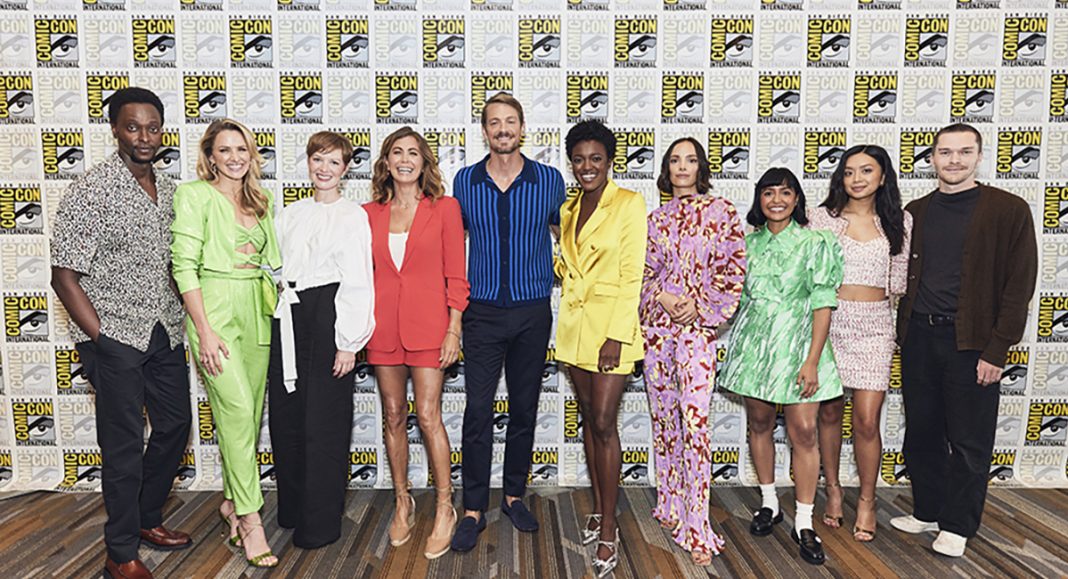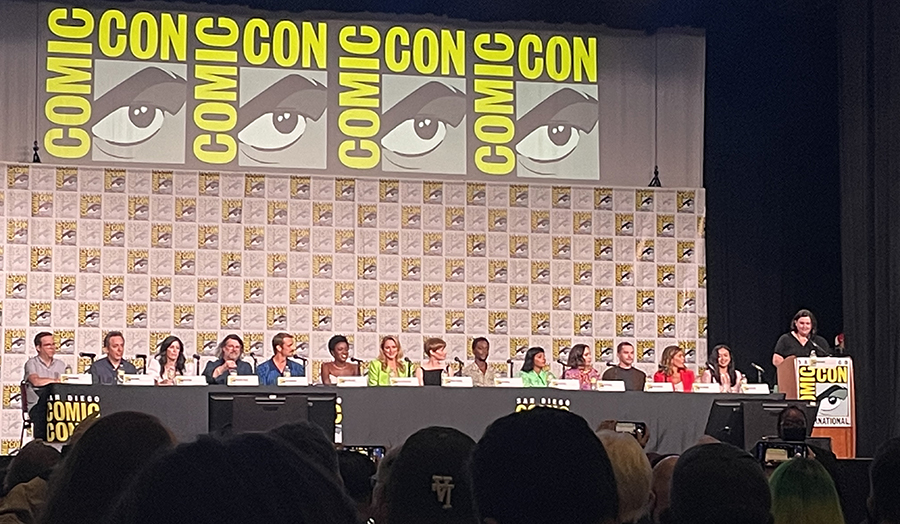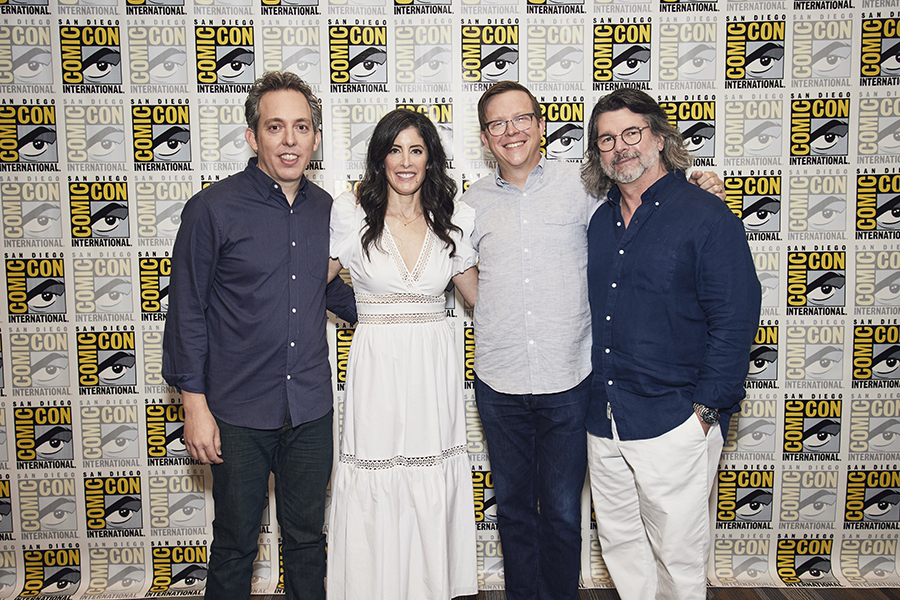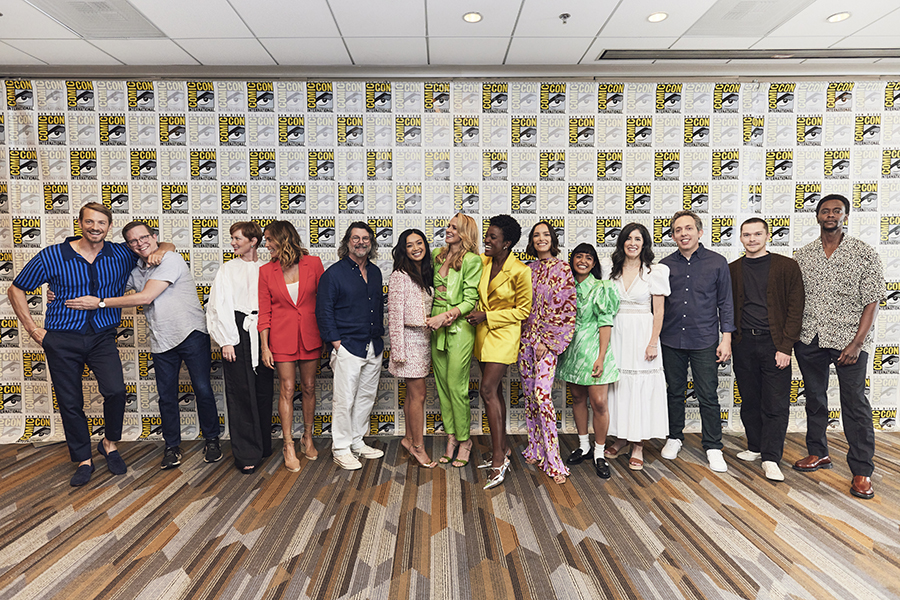By Ani Bundel
For All Mankind was one of Apple TV+’s four initial offerings when the streaming service launched in 2019 and was labeled too slow by critics. The original premise was that the Russians get to the moon first and NASA plays catch up by diversifying with women astronauts and Black and Asian space explorers. However, what started as a straight “What If” scenario has evolved. The focus on the 1960s civil rights movement and how the space program getting a fire lit under it would force social progress is now paying off in unexpected ways while failing humanity in others.
But as the series keeps getting renewed (and becomes a cultish critical darling), that “alternate reality” has expanded. Season 2 took the show through the late 1970s and the 1980s. Season 3 enters the 1990s and eras that the series showrunners lived through and have to decide how the butterfly wings of history have changed everything from social mores to technology.
The SDCC 22 panel in Ballroom 20 brought out an entire stage’s worth of panelists to discuss the third season, which wraps up on Apple TV+ next month. Moderator Kelly Lawler introduced 14 faces, including creator Ronald D. Moore, showrunners Matt Wolpert and Ben Nedivi, and producer Maril Davis. Most of the cast was in attendance, too, including Joel Kinnaman, Shantel Van Santen, Wrenn Schmidt, Krys Marshall, Jodi Balfour, Edi Gathegi, Casey W. Johnson, Coral Peña, Sonya Walger, and Cynthy Wu.
The panel debuted a “catch-up” trailer as part of the panel since there are only three episodes left in the season.
The show’s timeline also means that some of those who were young in the 1960s have had to age up substantially, especially Walger and Kinnaman, who made jokes about being sexy grandparents. The showrunners admitted that old age make-up wasn’t something they hadn’t thought of and how careful they must be to make it believable and not overdo it. Van Santen shouted out to the prosthetics people who worked so hard to make this work.
But the real way this show changes society is how women’s history has changed due to this NASA decision in the 1960s. Season 3 shows women in positions of power. (Including former astronaut Ellen Wilson, who runs for president on the Republican ticket and wins against Bill Clinton as the new season opens.) Producer Maril Davis pointed out that women dominate the current panel, and the show portrays them as taking “their rightful place” in society.
But for every step forward, the show has steps that aren’t going as fast or slow as they did in real life. For instance, “Don’t Ask, Don’t Tell” is still in full force, and being LGBTQ+ is still as dangerous as it was in the real early 1990s. Also, the internet is not free but government-controlled and monitored, as billionaire capitalists aren’t focusing on tech but on getting themselves into space. Meanwhile, Nasa is pushing to combat climate change, and even smaller things have gone right, like Charles marrying Camilla instead of Diana. But then again, the USSR never falls, so it’s a bit of a wash.
But ears perked up when Kinneman mentioned he’s thinking ahead to the next couple of seasons and being in his ’70s as the show reaches the modern day. The show has an official renewal for Season 4 and will be entering the 21st century. For All Mankind Season 3 continues with new episodes weekly streaming on Fridays on Apple TV+.
Miss any of The Beat’s earlier SDCC ’22 Coverage? Find it all here!











